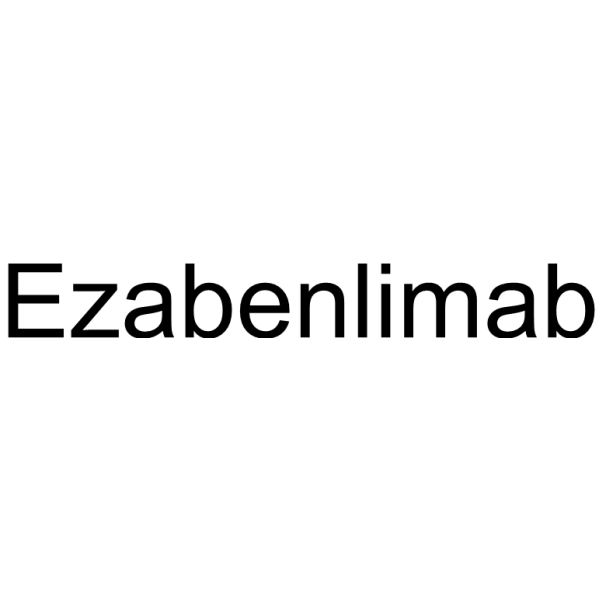| Description |
Ezabenlimab (BI-754091) is an anti-PD-1 mAb with binding constant Kd value of 6 nM (CHO cells). Ezabenlimab blocks the interaction of PD-1 with PD-L1 and PD-L2. Ezabenlimab increases interferon-γ secretion in T cells, and inhibits tumor growth in vivo[1].
|
| Related Catalog |
|
| Target |
PD-1/PD-L1, PD-1/PD-L2, IFN-γ[1]
|
| In Vitro |
Ezabenlimab inhibits the interaction of PD-1 to PD-L1 and PD-L2 in CHO cells with IC90s of 4.14 nM and 3.98 nM, respectively; and inhibits the interaction of PD-1 to PD-L1 and PD-L2 in cynomolgus with IC90s of 5.61 nM and 7.54 nM, respectively[1]. Ezabenlimab increases IFN-γ secretion in primary human antigen-experienced CD3-positive T cells, with an EC50 value of 0.9 nM[1]. Ezabenlimab (200 nM) has synergistic effect with BI 754111, resulting in further increase of IFN-γ secretion[1].
|
| In Vivo |
Ezabenlimab (0.3-30 mg/kg; i.p.; single dose or twice per week or every 3 weeks) inhibits tumor progress and shows comparable anti-tumor activity in hPD-1 knock-in mouse model[1]. Animal Model: hPD-1 knock-in mouse model[1] Dosage: 0.3 mg/kg, 1 mg/kg, 3 mg/kg, 10 mg/kg, 30 mg/kg Administration: Intraperitoneal injection; single dose or twice per week or every 3 weeks Result: Showed tumor growth inhibition (TGI) at day 25 dose-dependently of 99%, 101%, 91%, 48%, and 44%, respectively.
|
| References |
[1]. Zettl M, et al. Combination of two novel blocking antibodies, anti-PD-1 antibody ezabenlimab (BI 754091) and anti-LAG-3 antibody BI 754111, leads to increased immune cell responses. Oncoimmunology. 2022 Jun 16;11(1):2080328.
|
